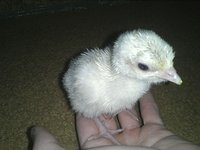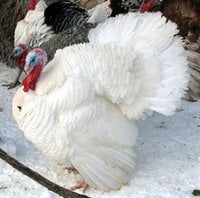General Information
The White Holland turkey originated in Mexico in the 1500's. They were shipped to Europe and became very popular. Large flocks were known to be raised in Holland, and were named "White Holland. They were imported to the United States in the early 1800's, and quickly became the most commercially raised bird in the early 1900's. They were prized for the white pin feathers, which made the cleaned birds look a lot better. This is an all white bird. They are very rare. They were admitted to the APA Standards in 1874. The mature weights for these birds is 36 lbs. for toms and 20 lbs. for the hens.


